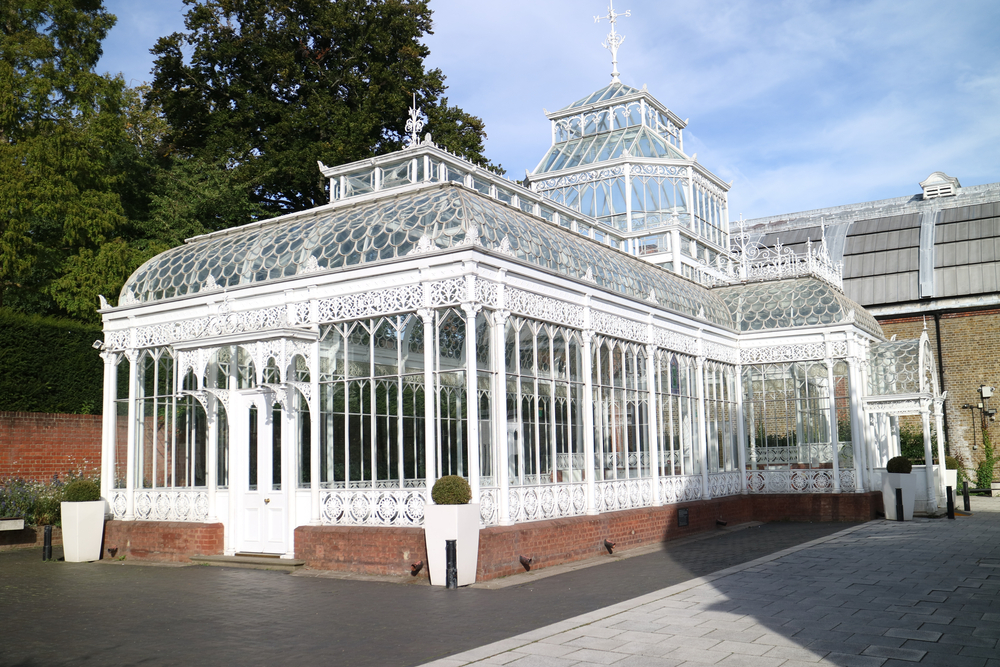
18 Nov A Brief History Of The Conservatory

A brief history of the conservatory. Stand in a conservatory attached to a home in the UK today, and you’re standing in a room with over 400 years of history. During that time, the conservatory has been through some changes and designs. The original conservatory had a purpose more similar to a greenhouse, and has been known by many names.
Conservatories In The Past
Conservatories came from the human desire to grow exotic fruits and flowers unsuitable for our climate. As far back as Roman times it is known that some buildings were constructed in different designs, specially to encourage certain plants to grow.
Until the manufacturing of glass was refined to make it more accessible however, these structures would be less recognisable as conservatories. In the 17th century glass was still difficult and costly to make. It was also heavily taxed. During the 1600’s oranges and other tropical fruits were brought back from the many global explorations taking place.
Buildings that had more glass than usual were built to house the exotic plants with the aim to grow more. Many of these were known as orangeries as, among other things, oranges were grown there. These buildings were usually distinct from the home. Most often placed on the land where the most sun would shine on them. They were also mostly brick but there was still much more glass than a normal building had at the time. Rather than large panes of glass, they would be smaller panes in tall windows.
Sometimes the north wall of the building, would have no windows and be extra insulated with straw instead. This was to keep as much warmth in as possible.
In the Orangery at Ham House, which was constructed in 1670, the plants were housed in tubs that could be moved with the sun and put into the garden in the summer.
New Plants Means New Innovations
Conservatories would still be mostly kept separate from the house as glass production became easier and more glass was added. They started to be known as ‘green houses’ and ‘conservatories’ because of the green plants being conserved within them.
In 19th century, the prospect of growing pineapples and grapes pushed a need for glazed roofs and more heat in the conservatory. As construction methods had improved, adding pitched roofs with glazed panes let more light and heat in. Pioneering the beginnings of central heating, to extend the growing season of grapes, some gardeners introduced steam from hot water pipes into their greenhouses.
From a social perspective, conservatories had become popular places to visit. In 1840 Sir Joseph Paxton designed, what was at the time, the largest glass building in England, at Chatsworth House. It was 84 metres long and among the visitors was Queen Victoria.
As before, construction and manufacturing methods kept improving, making it easier to erect conservatories. Rather than being a place to just grow fruit for consumption, in Victorian times, the conservatory had become an elaborate destination to walk and admire the exotic plants as a leisurely activity.
The Decline Of The Conservatory
This trend stayed popular until the world wars forced unnecessary building work to be abandoned and precious construction materials to be saved for the war efforts. Large houses and estates lost their garden staff and the costs to maintain them became too much. After the wars ended, building extravagant buildings for pleasure seemed excessive and was avoided. The materials used would still succumb to rust and frost easily and materials were expensive, so they fell out of fashion. Even Sir Joseph Paxton’s incredible conservatory at Chatsworth House was demolished in 1920.
Conservatories Grow Popular Again
As the nation recovered, construction materials become abundant again, and developments in the steel industry improved how glass could be framed. In the 1970’s, a trend for smaller, personal conservatories grew. These were designed in a simpler style but included elements of Victorian and Edwardian conservatory architecture. As many homes already had, what we know today as greenhouses in their garden, the unique feature of the modern conservatory was that it was attached to the home.
With the modern materials of the 21st century, conservatories can be temperature controlled with the flick of a switch. Whether you grow oranges in them or not, they are a useful and enjoyable feature in a home. Next time you’re sitting in your sunny conservatory, you can marvel on how jealous the Romans would be.
Don’t have a conservatory but looking for more space in your home? Become part of history and speak to our friendly team at Park Lane for advice.

